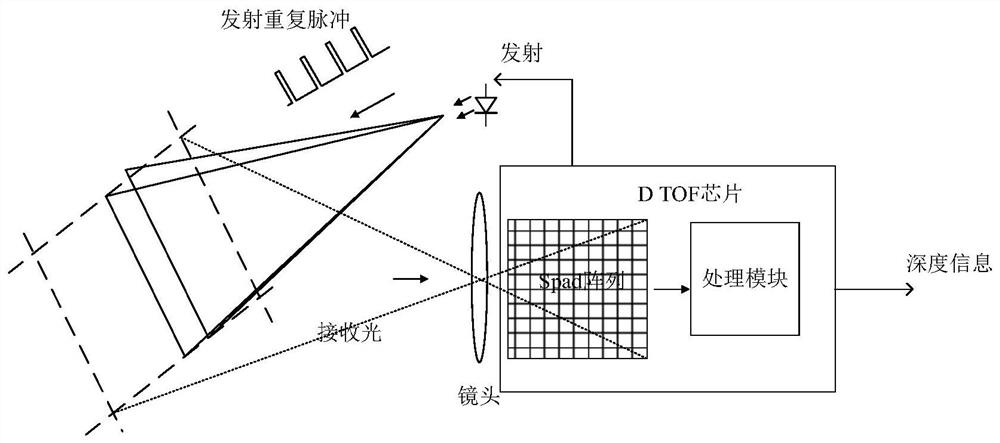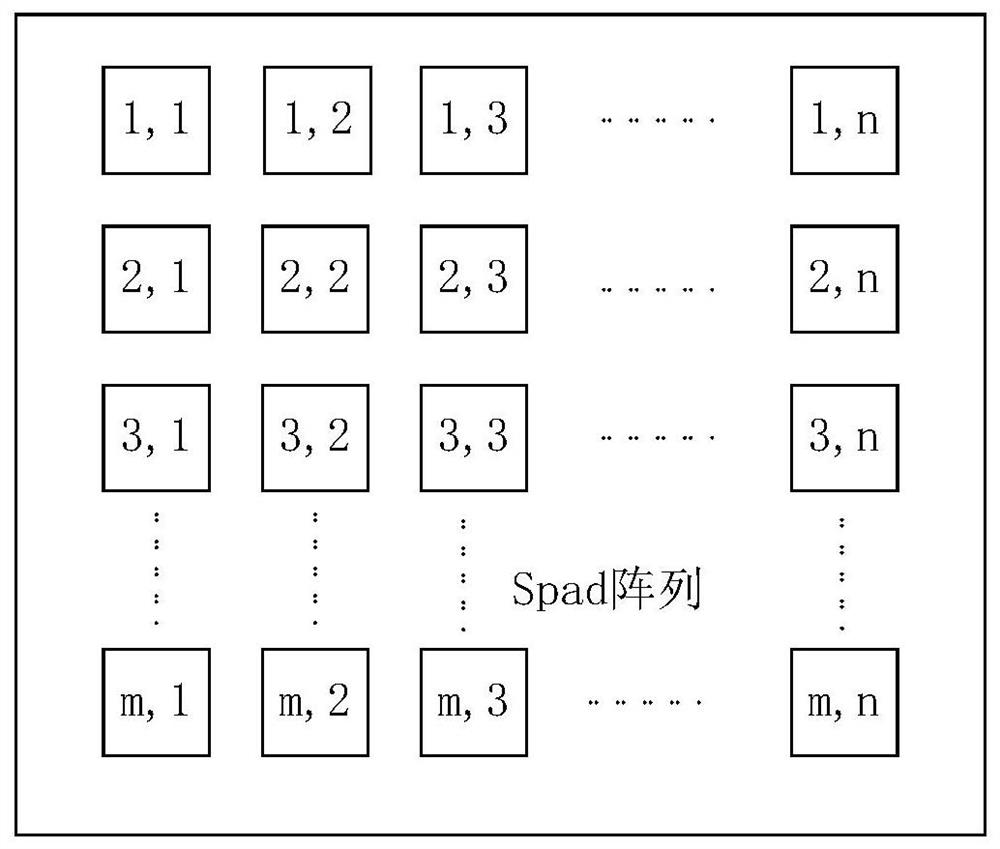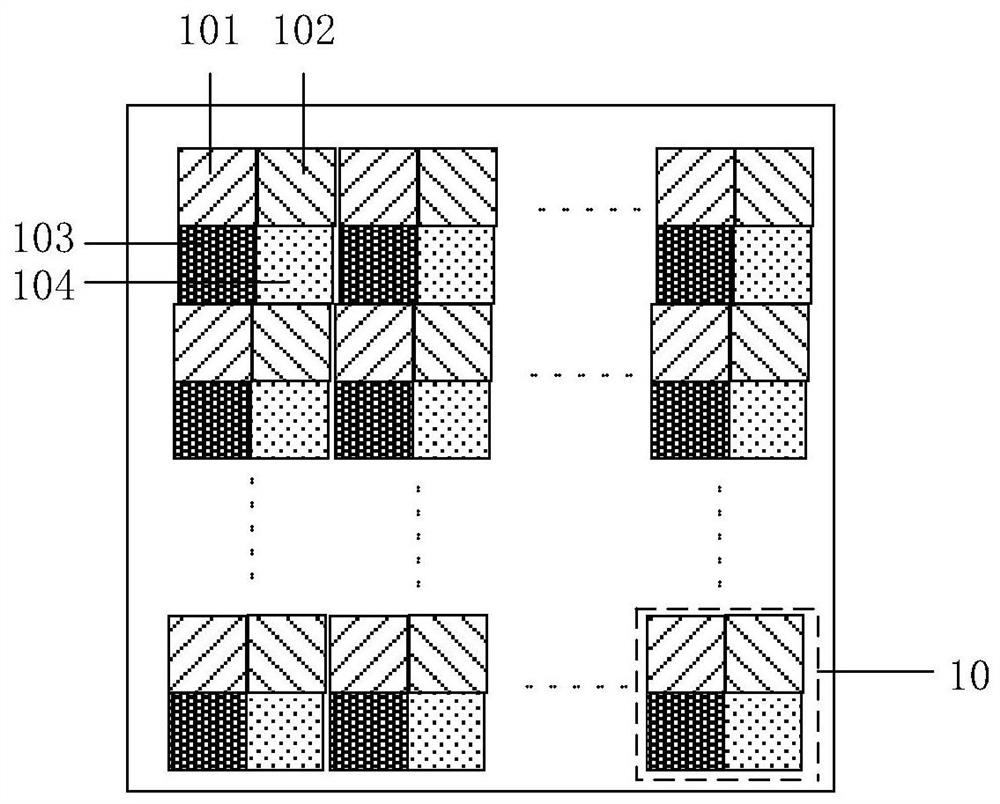Distance sensor pixel array structure, distance sensor and working method
A distance sensor and pixel array technology, applied in the sensor field, can solve the problems of mobile phone shutdown, high power consumption, AR and VR cannot be popularized, etc., and achieve the effect of reducing transmission power, reducing power consumption, and promoting popularization.
- Summary
- Abstract
- Description
- Claims
- Application Information
AI Technical Summary
Problems solved by technology
Method used
Image
Examples
Embodiment 1
[0037] Embodiment 1 of the present invention provides a distance sensor pixel array structure. The implementation details of this embodiment will be specifically described below in conjunction with the accompanying drawings. The following content is only implementation details provided for easy understanding, and is not necessary for implementing this solution. Please refer to image 3 , this example includes:
[0038] A plurality of pixel units are arranged in an array, and some of the pixel units are turned on at the same time.
[0039] In this embodiment, adjacent i×j pixel units form a group 10 , and the distance sensor pixel array structure includes the plurality of groups 10 .
[0040] For example, each group 10 is a combination of 2×2 pixel units.
[0041] Typically, each group can be identical.
[0042] In addition, each group can also be in other forms, such as 2×3, 3×3, etc. In this embodiment, each group does not need to be too complicated.
[0043] Taking a si...
Embodiment 2
[0046] Embodiment 2 of the present invention provides a distance sensor, which may be further optimized or improved on the basis of Embodiment 1. The implementation details of this embodiment are described in detail below, and the following content is only implementation details provided for easy understanding, and is not necessary for implementing this solution. This example includes:
[0047] A transmitting end and a receiving end, the receiving end includes a plurality of pixel units arranged in an array; some of the pixel units are irradiated by the light spot emitted by the transmitting end with normal power, and the irradiated pixel units are in an on state.
[0048] Therefore, in the embodiment of the present invention, only the elements in the turned-on state will be irradiated, so that the utilization rate of the transmitting end can be maximized, and the waste of transmitting power consumption can be avoided.
Embodiment 3
[0050] Embodiment 3 of the present invention is a distance sensor, which can be further optimized or improved on the basis of Embodiment 2. The implementation details of this embodiment will be specifically described below in conjunction with the accompanying drawings. The following content is only implementation details provided for easy understanding, and is not necessary for implementing this solution. Please refer to Figure 4 and Figure 5 , this example includes:
[0051] For example, the emitting end can be divided into multiple light-emitting areas, such as Figure 4 It schematically shows the light emitting area 1, the light emitting area 2, the light emitting area 3 and the light emitting area 4, and different light emitting areas can emit light at different time periods. The receiving end can be divided into multiple receiving areas, such as Figure 5 Receiving area 1, receiving area 2, receiving area 3 and receiving area 4 are schematically shown, and different...
PUM
 Login to View More
Login to View More Abstract
Description
Claims
Application Information
 Login to View More
Login to View More - R&D
- Intellectual Property
- Life Sciences
- Materials
- Tech Scout
- Unparalleled Data Quality
- Higher Quality Content
- 60% Fewer Hallucinations
Browse by: Latest US Patents, China's latest patents, Technical Efficacy Thesaurus, Application Domain, Technology Topic, Popular Technical Reports.
© 2025 PatSnap. All rights reserved.Legal|Privacy policy|Modern Slavery Act Transparency Statement|Sitemap|About US| Contact US: help@patsnap.com



